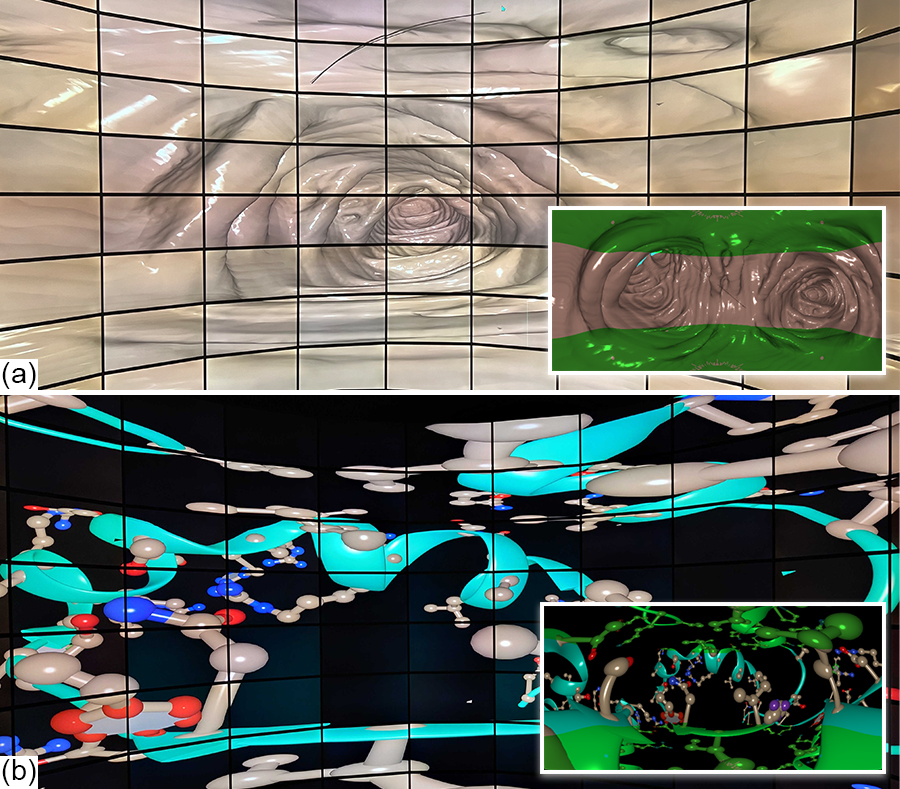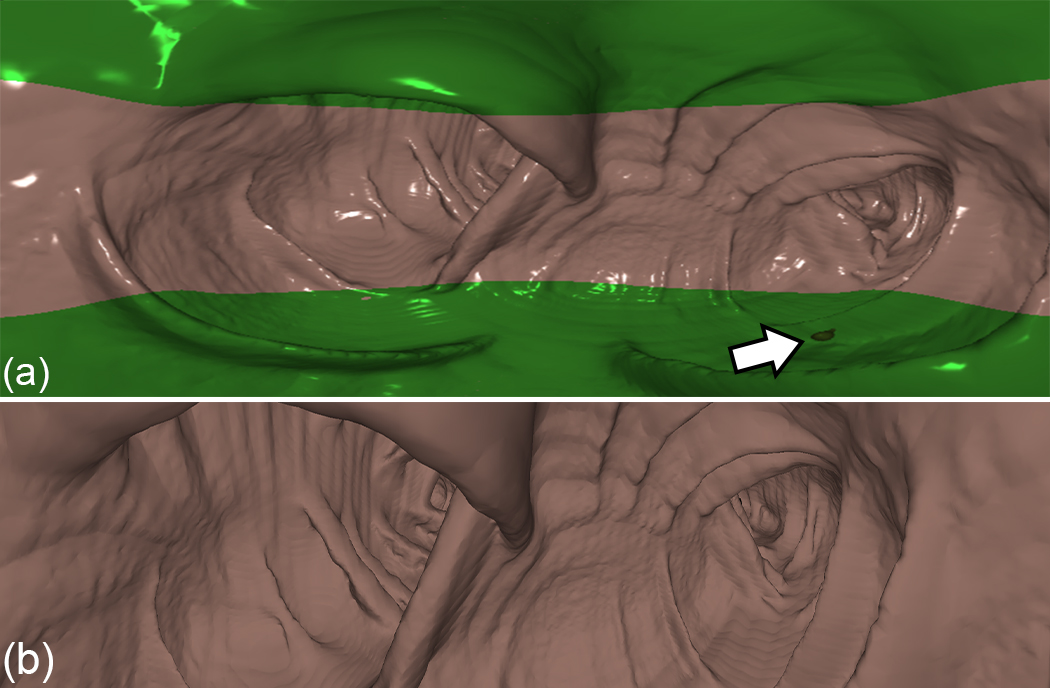Conformal Retargetting for LWDs
Recovering Information for Missing Display Surfaces in LWD Facilities
Immersive facilities, despite their numerous advantages, face a significant challenge: the absence of certain display surfaces-such as floors, ceilings, or entrances-which leads to incomplete visual coverage and impaired navigation. We encountered this issue while working on our Large Wall Display (LWD) facility, Silo (Boorboor et al., 2025). Silo is a cylindrical facility composed of 21 columns; however, it includes a gap for an entrance and lacks display surfaces on both the floor and ceiling.
Conformal mapping techniques, such as Ricci Flow, offer a solution for recovering this missing information. These angle-preserving mappings allow us to transform a nearly complete 3D shape (such as a capsule) onto a flat texture, which can then be applied to facilities with missing display areas, like the cylindrical Silo.
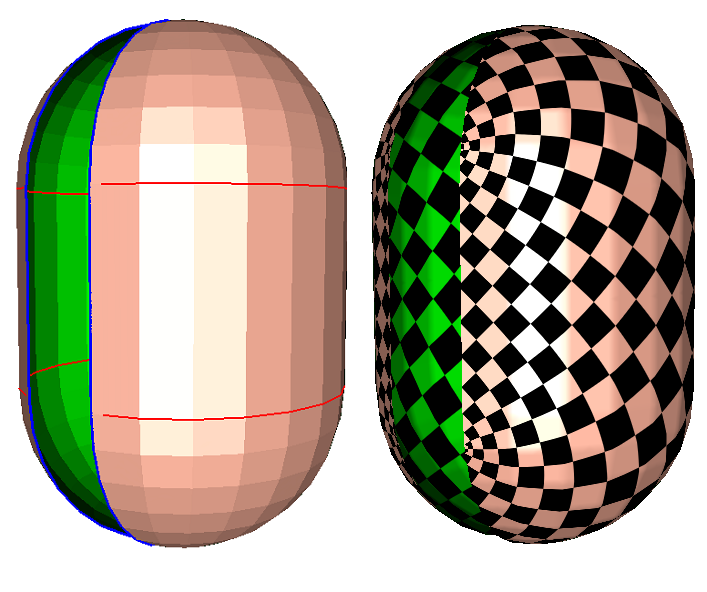
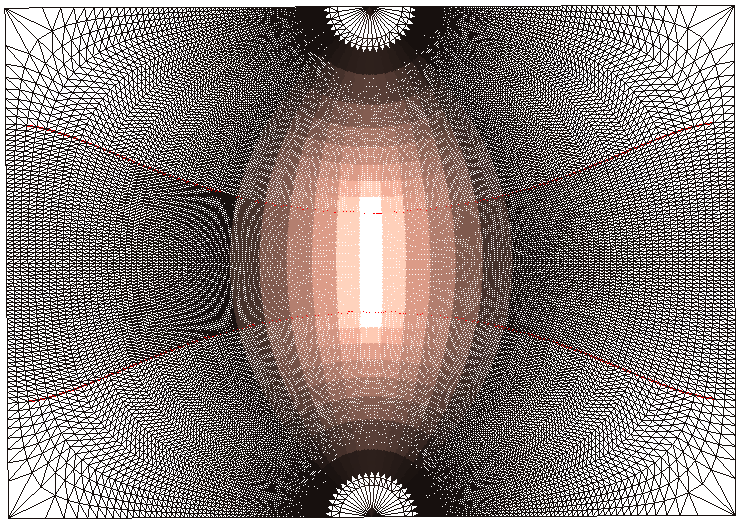
However, while conformal mappings can recover missing regions, they can also introduce visual distortions. To address this, we can apply area-preserving Optimal Transport (OT) techniques to correct these distortions.
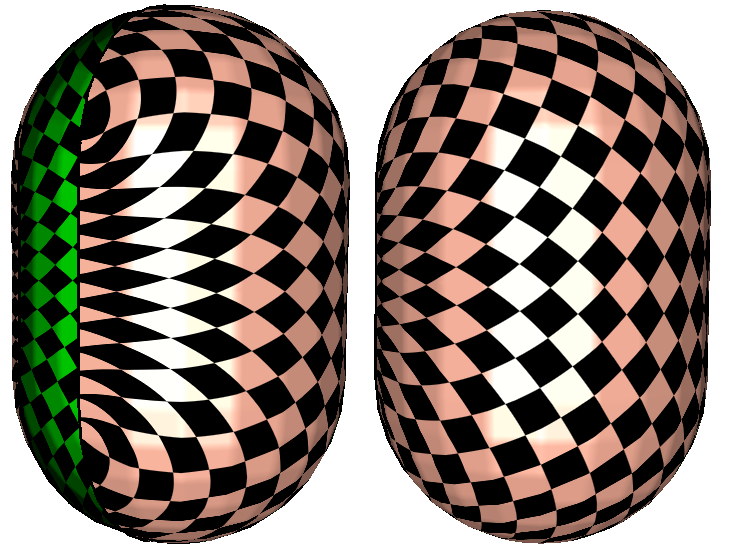
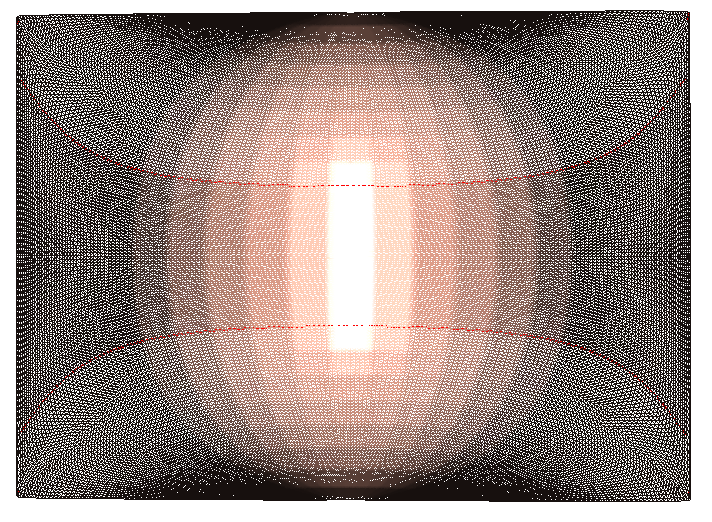
Ray tracing can then be used to generate textures based on these corrected conformal mappings.


Finally, applying these textures to immersive facilities, such as the Silo (Boorboor et al., 2025), allows us to visualize previously hidden information.
